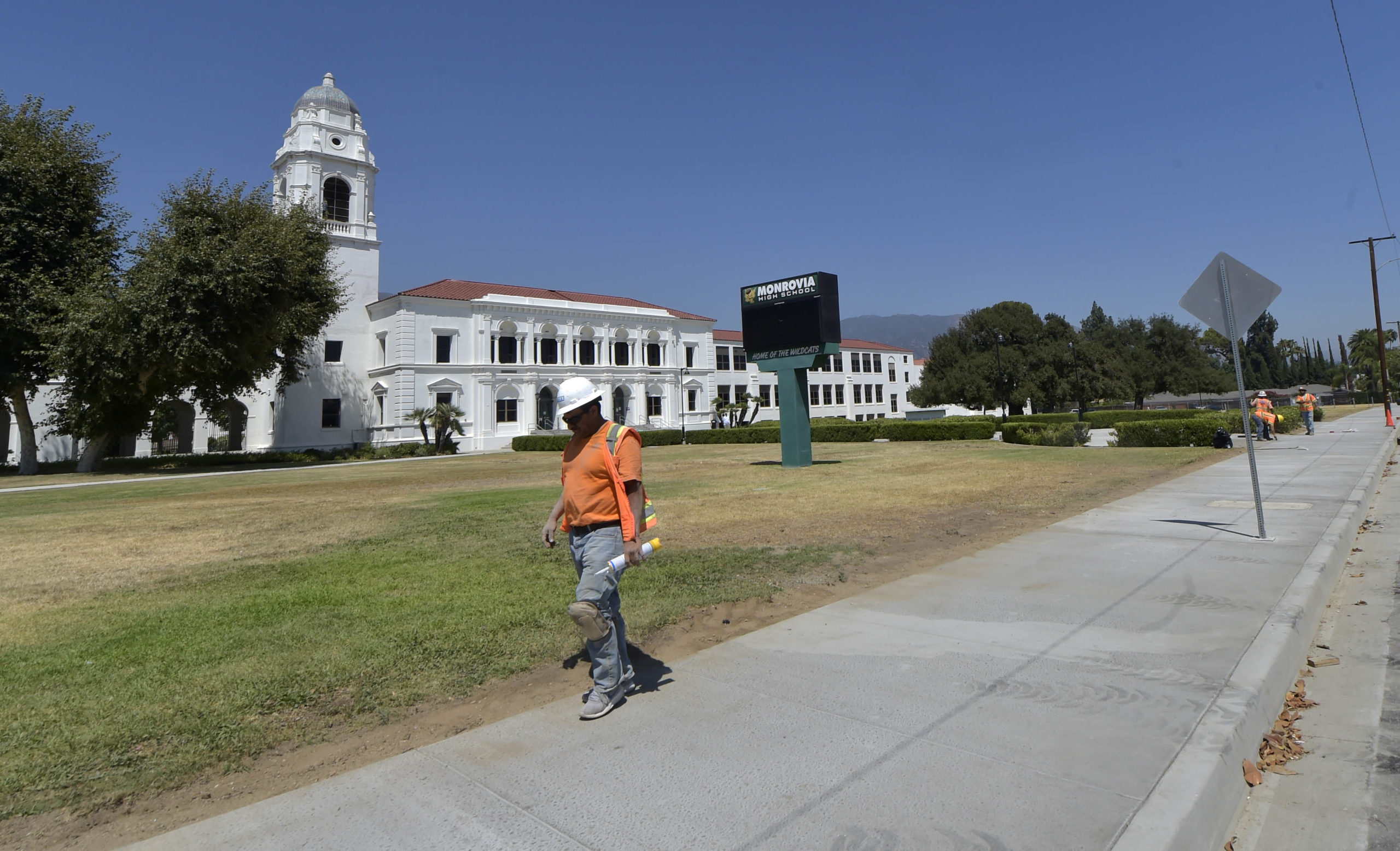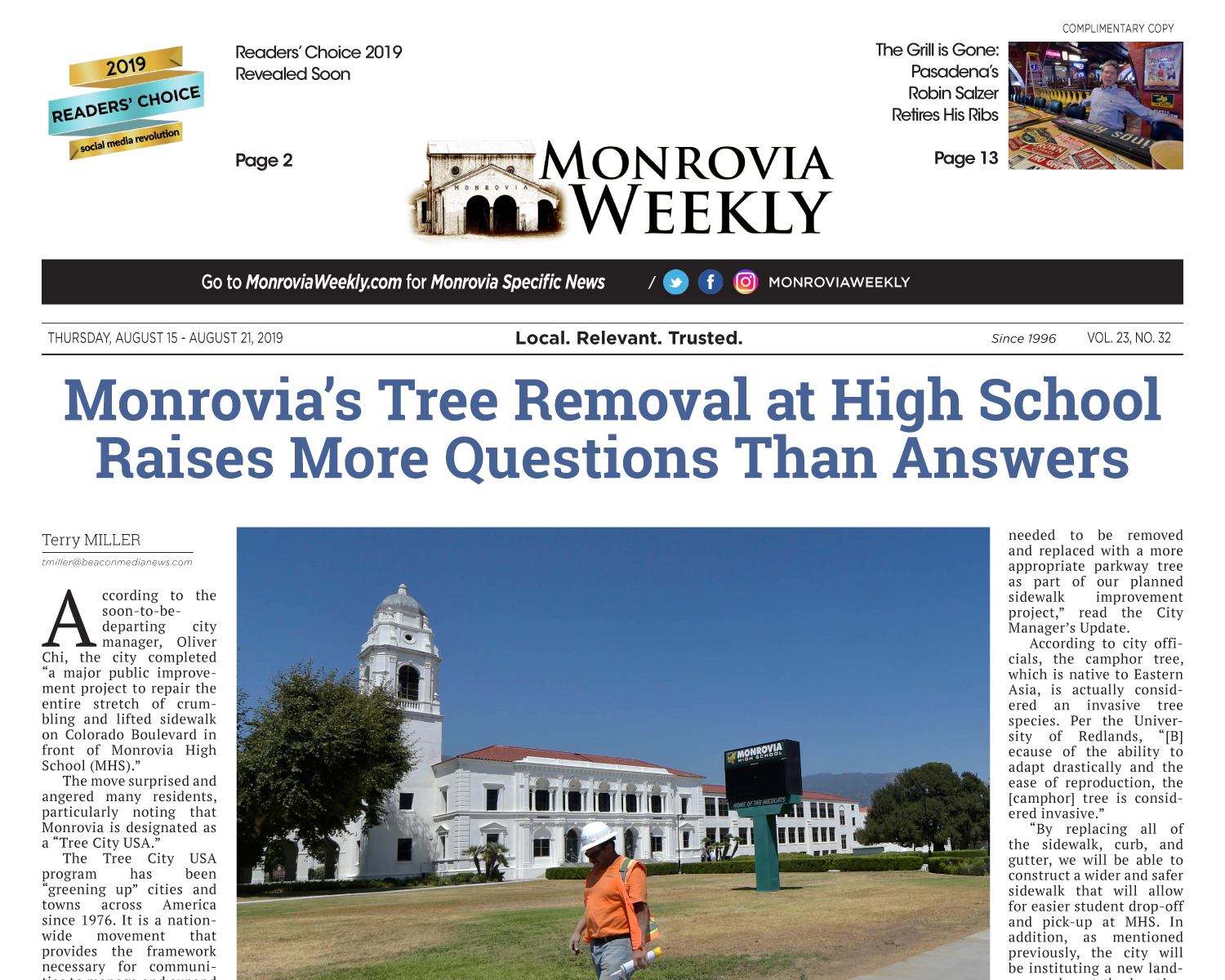
By Terry Miller
According to the soon-to-be-departing city manager, Oliver Chi, the city completed “a major public improvement project to repair the entire stretch of crumbling and lifted sidewalk on Colorado Boulevard in front of Monrovia High School (MHS).”
The move surprised and angered many residents, particularly noting that Monrovia is designated as a “Tree City USA.”
The Tree City USA program has been “greening up” cities and towns across America since 1976. It is a nationwide movement that provides the framework necessary for communities to manage and expand their public trees. More than 3,400 communities have made the commitment to becoming a Tree City USA.
According to city officials, 20 healthy and mature camphor trees located on the north side of Colorado Boulevard, directly in front of MHS, were cut down in the prime of their life due to the invasive effect on the sidewalk deterioration. The potential liability was, no doubt, a part of the overall decision which led to this project.
The city claims that it will replace the trees (two-for-one) with “less invasive” species.
City trees provide huge benefits — clean air, clean water, shade and beauty to name a few — but they also require an investment to remain healthy and sustainable. By providing support at or above the $2 per capita minimum, a community demonstrates its commitment to grow and tend these valuable public assets. Budgets and expenditures require planning and accountability, which are fundamental to the long-term health of the tree canopy and the Tree City USA program.
“Here at the city, we are always sensitive when it comes to removing any parkway trees, and we always try to avoid any tree removals here in the city. However, after spending significant time and consideration thinking through the options at hand, we identified that the camphor trees needed to be removed and replaced with a more appropriate parkway tree as part of our planned sidewalk improvement project,” read the City Manager’s Update.
According to city officials, the camphor tree, which is native to Eastern Asia, is actually considered an invasive tree species. Per the University of Redlands, “[B]ecause of the ability to adapt drastically and the ease of reproduction, the [camphor] tree is considered invasive.”
“By replacing all of the sidewalk, curb, and gutter, we will be able to construct a wider and safer sidewalk that will allow for easier student drop-off and pick-up at MHS. In addition, as mentioned previously, the city will be instituting a new landscape plan at the location as part of our improvement efforts.”
We wanted to hear from the experts on the matter after several members of the community approached this reporter regarding the trees’ removal and overall city policy on this as Monrovia is designated at a Tree City USA.
Attempts to contact city hall and the city manager’s office for comment were not immediately returned Tuesday or Wednesday prior to press time.
How long will it take to provide shade again for students at Monrovia High?






